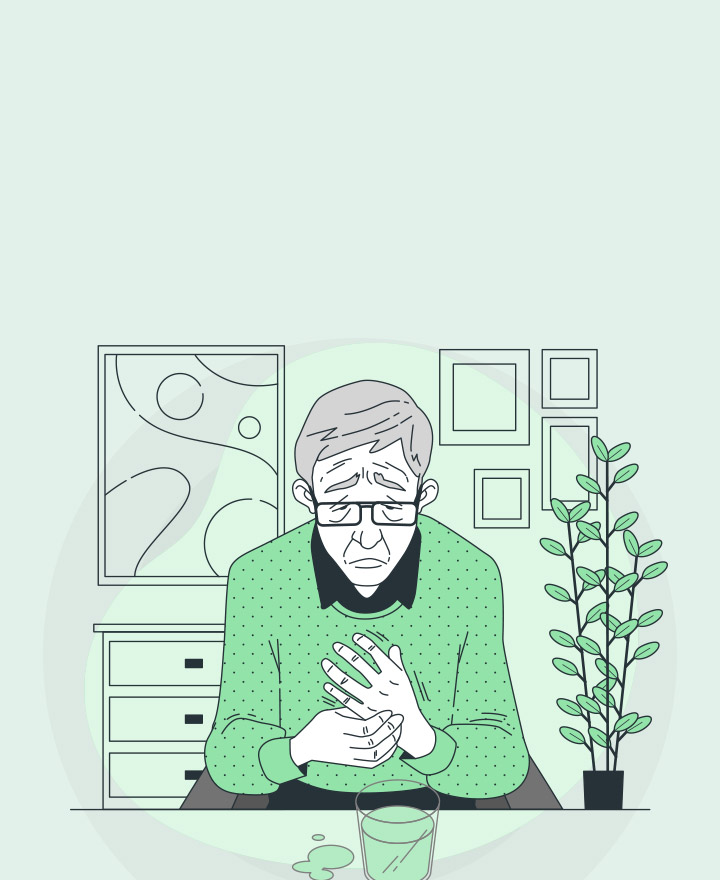

Understanding Cartilage, Joints, and the Aging Process
As we age, cartilage may deteriorate; leading to conditions like osteoarthritis. Osteoarthritis (OA) is the most common form of arthritis. OA is also commonly referred to as degenerative joint disease. It is one of the leading causes of disability in adults, but with right treatment and personalized guidance its symptoms can be managed effectively. Read on to know more.
The structure of joints
Cartilage cushions the ends of your bones and allows them to move smoothly and easily against each other. The joints are surrounded by a membrane called the synovium that produces a thick fluid that helps keep your cartilage healthy.
As wear and tear of the cartilage occurs, your synovium can become inflamed and thickened. This may lead to inflammation and cause extra fluid to build up within your joints, resulting in swelling.
The joints most commonly affected by OA are your knees, hips, hands, feet, and spine.
As cartilage further deteriorates, the underlying bones may not have enough cushioning from your cartilage. This results your bone surfaces to come in direct contact with each other and once this happens, there’s usually pain and inflammation that occurs in your joints and surrounding tissues. As your bones continue to grind and rub against one another, they begin to grow osteophytes or bone spurs.
The Natural Process of Aging
The risk of experiencing mild pain or soreness while exercising, climbing stairs or walking, increases as you grow older and your body doesn’t recover as quickly as it did before.
One of the most prevalent symptoms in patients with osteoarthritis is stiffness, which is caused by ageing-induced natural deterioration of cartilage and is commonly experienced after lying or sitting down for a long duration. Ageing also reduces muscle tone and bone strength which further makes physically demanding tasks more difficult and taxing on your body.
Risk Factors for Osteoarthritis
Apart from increasing age, other factors that increase a person’s chances of developing the condition include:
• Being over-weight may put additional stress on your joints, bones, and cartilages.
• Individuals with a family history of OA are at an increased risk for developing OA.
• Most types of arthritis are more common in women as compared to men.
• Certain jobs such as construction, farming, cleaning, or working in retail can increase the risk of developing OA.
Treatment
Osteoarthritis doesn’t have a cure. Instead, the goal of treatment is to manage and alleviate pain, and reduce any contributing factors that may worsen OA symptoms.
Treatment for OA is often tailored to a person’s lifestyle and the triggers that cause pain and soreness. A range of treatment options are available. These include:
• Medication
The doctor may prescribe medicines to help reduce the pain. This includes NSAIDs and acetaminophen.
• Injection
Steroid injections can help reduce pain in affected joints. However, they shouldn’t be used repetitively because they can cause additional joint damage over time.
• Surgery (Osteotomy)
This treatment option is typically reserved for people who have severe and debilitating OA. An osteotomy is an operation that realigns a bone by cutting and then repositioning it.
At-home Remedies for Osteoarthritis
Simple lifestyle adjustments can make things easier on your bones and joints along with managing pain.
This includes:
• Cold or Heat therapy
Warm compressions or applying cold packs to joints when they’re sore or painful can help relieve pain and reduce inflammation.
• Exercise
Low-impact exercises and activities can help strengthen bones and muscles. You can consider activities like tennis, baseball, yoga, golf, cycling, etc.
• Weight loss
Studies show that weight loss can help reduce OA symptoms by minimizing stress on hips and knees.
• Rest
Adequate rest can help your body recover more efficiently. It can reduce swelling issues and offer pain relief.
• Assistive devices
Using assistive devices can help unload and provide support to arthritic joints. This includes using braces, splints, and canes.
Conclusion
It’s very common to experience some soreness and aching in our joints as we age, even while performing basic daily activities like standing or climbing stairs.
However, there are both medical treatments and lifestyle changes that you can adopt to help reduce your pain and manage other symptoms.
One of the important components of our overall wellness is also being financially secured. Healthcare emergencies can happen any time, but a good health insurance policy can protect you from such uncertain situations. To know more about Wellness and other health related tips, visit the Wellness Corner.
Source: nmortho, healthline, cdc.gov
Disclaimer: This blog provides general information and discussions about health and related subjects. The information and other content provided in this blog, website or in any linked materials are not intended and should not be considered, or used as a substitute for, medical advice, diagnosis or treatment. Kindly contact your Doctor before starting a new medicine or health regime.
Related Articles
Know How to Prevent and Treat Arthritis
A Guide to Understanding Arthritis and Its Different Types
8 Trigger Food to Avoid When You Have Arthritis
10 Best Summer Foods to Boost Immunity and Bone Health
The Most Common Causes of Limited Mobility in Seniors
Published on November 27, 2023














 Health Insurance
Health Insurance  Travel Insurance
Travel Insurance  Car Insurance
Car Insurance  Cyber Insurance
Cyber Insurance  Critical Illness Insurance
Critical Illness Insurance
 Pet Insurance
Pet Insurance
 Bike/Two Wheeler Insurance
Bike/Two Wheeler Insurance  Home Insurance
Home Insurance  Third Party Vehicle Ins.
Third Party Vehicle Ins.  Tractor Insurance
Tractor Insurance  Goods Carrying Vehicle Ins.
Goods Carrying Vehicle Ins.  Passenger Carrying Vehicle Ins.
Passenger Carrying Vehicle Ins.  Compulsory Personal Accident Insurance
Compulsory Personal Accident Insurance  Travel Insurance
Travel Insurance  Rural
Rural